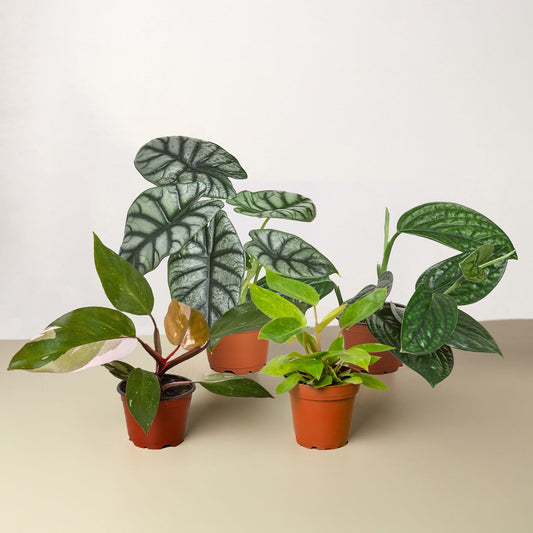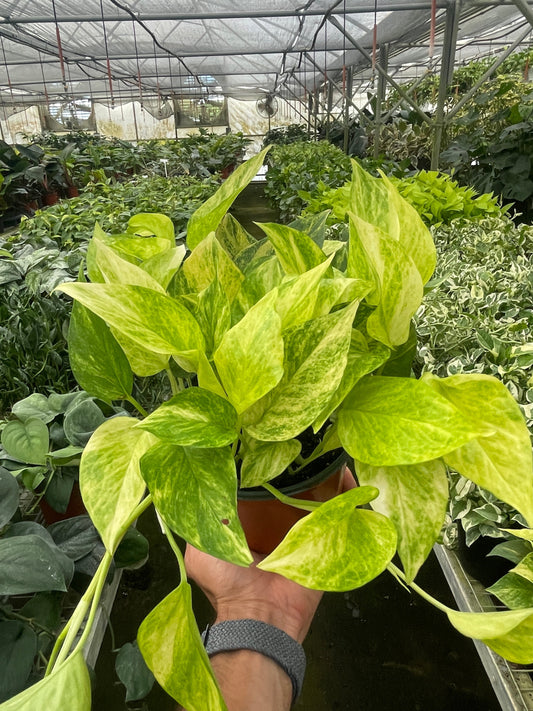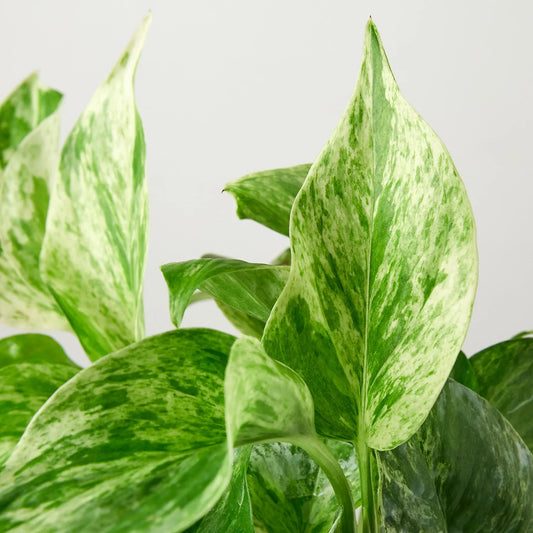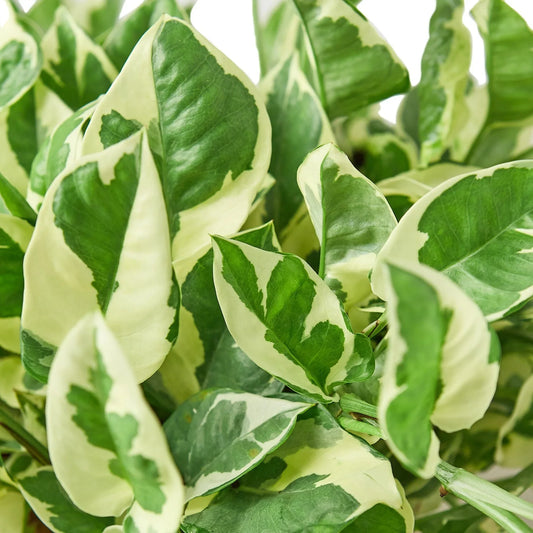What Temperature Should My Pygmy Date Palm Be Kept At?
Cafe Planta Team
If you've ever marveled at the elegance of a pygmy date palm, you're definitely not alone. These charming little palms can bring a touch of the tropics into your home, offering a unique aesthetic that pairs well with a variety of interior designs. But, like any plant, they come with specific care needs, and temperature is a biggie.
In this post, we're going to cover what temperature your pygmy date palm thrives in. We'll look at why temperature matters, how to maintain the ideal conditions, and what to do if things get a bit too hot or cold. Plus, I'll share some tips on integrating these beautiful palms into your home decor. By the end, you'll have all the tools you need to keep your pygmy palm happy and healthy.
Why Temperature Matters for Your Pygmy Date Palm
Before we jump into specifics, let's chat about why temperature is such a crucial factor for your pygmy date palm. Hailing from the tropical climates of Southeast Asia, these plants are used to warm, stable environments. So, when you bring one into your home, you're essentially trying to mimic its natural habitat as closely as possible.
Temperature affects various aspects of a plant's health, including growth rate, water absorption, and even its ability to fight off pests. A pygmy date palm that's too cold might stop growing altogether, while one that's too hot could suffer from wilting or leaf burn. Both extremes can lead to stress, which makes your plant more vulnerable to diseases and pests. It's like how we feel off when we're not in the right environment—too cold, and we shiver; too hot, and we're just not at our best.
Understanding and maintaining the right temperature for your pygmy date palm can set the foundation for all other care aspects. It's like the backbone of healthy plant maintenance. So, let's dig into what those ideal conditions look like.
Ideal Temperature Range for Pygmy Date Palms
Now, onto the specifics. Pygmy date palms prefer temperatures that sit between 65°F and 75°F (18°C to 24°C). This range closely mirrors the subtropical climates where they naturally thrive. Think of it as a sweet spot—warm enough to mimic the palm's native conditions but not so hot that it causes stress.
During the winter months, when temperatures drop, it's important to ensure your palm doesn't get too chilly. While they can withstand brief dips down to 50°F (10°C), anything lower can be harmful. On the flip side, during those sweltering summer days, try to keep your palm out of direct sun and away from heat sources that push it above 85°F (29°C).
It's not just about the number on the thermostat, though. Consistency is also key. Sudden temperature fluctuations, like those caused by drafts or heating vents, can stress the plant out. So, aim for a stable environment, and your pygmy date palm will thank you with lush, vibrant growth.
Managing Indoor Temperature: Tips and Tricks
Okay, so you've got the ideal temperature range in mind. But how do you ensure your home stays within it? Let's talk about some practical ways to manage the indoor temperature for your pygmy date palm.
1. Choose the Right Spot
Location is everything. Place your palm in an area where the temperature remains relatively stable. Avoid spaces near drafty windows, doors, or HVAC vents. A spot with indirect sunlight is often perfect.
2. Use a Thermometer
It might sound a bit nerdy, but a simple indoor thermometer can be a plant parent's best friend. It helps you monitor the temperature and make adjustments as needed. You can find digital versions that are easy to read and even connect to your smartphone.
3. Adjust Humidity
Temperature and humidity often go hand in hand. Since pygmy date palms also love humidity, consider using a humidifier in the room. This can help keep the air moist and warm—just like the palm's native habitat.
4. Consider Seasonal Changes
As the seasons change, so should your care routine. In winter, move your palm away from cold windows, and during summer, provide it with some shade if it's getting too much direct sunlight.
With these tips in your toolkit, you'll be well on your way to maintaining that perfect little microclimate for your pygmy date palm.
Signs Your Pygmy Date Palm Is Too Cold or Hot
Sometimes, despite our best efforts, conditions aren't quite right. So, what signs should you look for to know if your pygmy date palm is too cold or too hot?
Too Cold
If your palm is shivering, metaphorically speaking, you'll notice a few tell-tale signs. Leaves might turn brown and crispy, growth will slow, and you might even see some drooping. A really cold snap can cause leaf damage, so make sure to keep an eye out, especially during those chillier months.
Too Hot
On the other hand, if temperatures soar, the palm might start to droop and look a bit wilted. Leaves can become scorched, turning brown along the edges. If you notice these symptoms, it's time to move your palm to a cooler spot and check for adequate watering.
Remember, plants have their own ways of communicating. By paying attention to these signs, you can adjust the environment and bring your pygmy date palm back to its happy place.
What to Do If Your Palm Is in the Wrong Temperature
Okay, so maybe you're seeing some signs that your pygmy date palm isn't quite where it should be temperature-wise. What do you do?
Adjust Placement
The first step is often the simplest: move your plant. If it's too cold, try relocating it to a warmer spot, away from drafts and cold windows. If it's too hot, find a cooler area with indirect light.
Regulate Room Temperature
Use fans, heaters, or air conditioning units to help maintain a consistent temperature. Just be cautious not to place your palm directly in the path of any of these devices, as the air movement can be too harsh.
Modify Your Watering Schedule
Temperature can affect how much water your plant needs. In cooler conditions, your palm might require less water, while warmer temps might mean a bit more hydration is necessary. Always check the soil moisture before watering.
By taking these steps, you can make sure your pygmy date palm is back on track and ready to thrive.
Integrating Pygmy Date Palms into Your Home Decor
Now that you've got temperature control down, let's talk about how to make your pygmy date palm a star in your home decor. These palms are versatile and can fit into a variety of styles, from modern minimalism to boho chic.
Choosing the Right Planter
A great planter can make all the difference. Go for something that complements your existing decor but also gives your palm room to grow. Terracotta is a classic choice, but ceramic or woven baskets can add a unique touch.
Layering with Other Plants
Pygmy date palms look fantastic when grouped with other plants. Consider pairing them with taller plants like fiddle leaf figs or shorter ones like snake plants to create a layered, lush look.
Lighting and Accessories
Use lighting to highlight your palm and create ambiance. A strategically placed lamp can cast beautiful shadows and bring attention to those delicate leaves. Add a cozy chair or a small table nearby, and you've got a perfect little retreat in your home.
By creatively incorporating your pygmy date palm into your decor, you not only enhance your living space but also ensure your plant feels like a natural part of your home.
Temperature and Pygmy Date Palm Health: The Bigger Picture
While temperature is a crucial part of caring for your pygmy date palm, it's just one piece of the puzzle. Plant health depends on a combination of factors including light, water, and soil health. Think of it like a recipe—all the ingredients need to be just right for the best outcome.
Temperature affects how your plant absorbs water and nutrients. When it's too cold, the plant's growth slows, and it might not absorb water efficiently. In hot conditions, it might lose moisture too quickly, leading to dehydration. Both scenarios can stress the plant, making it susceptible to diseases.
So, while we're focusing on temperature here, remember to balance it with other care aspects. This holistic approach ensures your pygmy date palm grows healthy and strong, bringing joy and beauty to your home for years to come.
Final Thoughts
In summary, maintaining the right temperature for your pygmy date palm is crucial for its health and well-being. By keeping temperatures between 65°F and 75°F and avoiding sudden fluctuations, you set the stage for a thriving plant. Pair this with proper placement, regular monitoring, and adjusting care routines as needed, and your palm will be a happy part of your home.
At Cafe Planta, we're here to support you in your plant journey. If you have questions or need advice, feel free to email us or reach out on Instagram. We believe plants bring us closer to nature and each other, and we're excited to help you grow a beautiful, thriving plant collection.



















